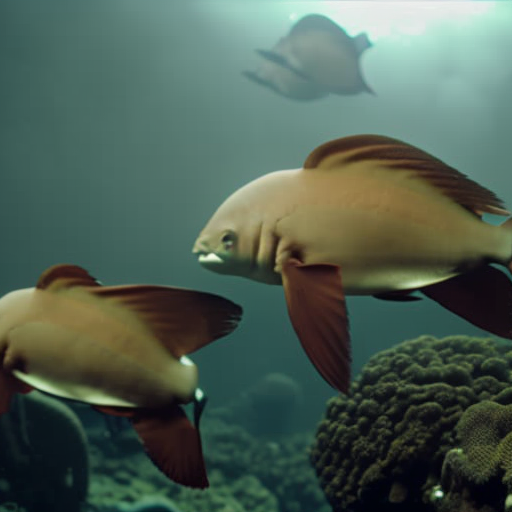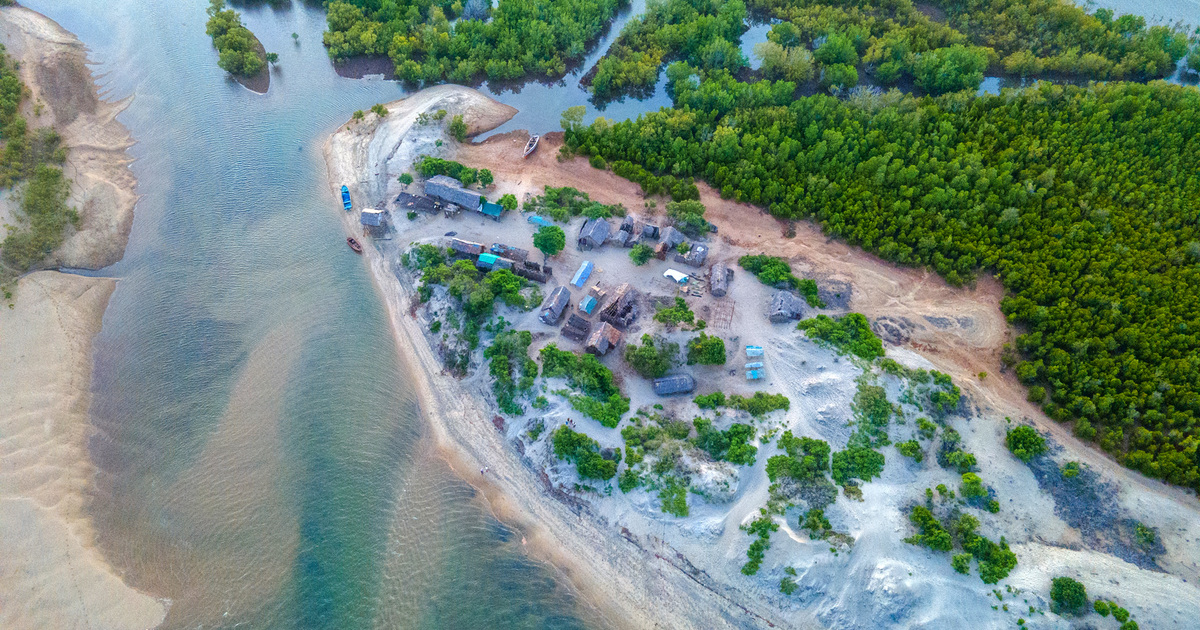

We’re safeguarding coastal ecosystems in Kenya through community-led species protection and conservation initiatives.
Problem
The Kenyan coast runs for approximately 600 kilometers along the Indian Ocean, with coastal and marine ecosystems home to rich and diverse marine life that support the livelihoods of 2.7 million people. These waters host five species of marine turtle, all classed as endangered or critically endangered; more than 35 species of marine mammal, including whales, dolphins and dugongs; and 105 species of bony fish, including sharks and rays.
Kenya’s rich marine ecosystems face various threats ranging from rapid population growth and concomitantly increased fisheries exploitation, illegal fishing, and loss of mangrove cover, coupled with global environmental threats such as climate change and increased development pressures, which brings habitat degradation.
Threats are resulting in the unsustainable exploitation of coastal resources; the loss of endangered, threatened, and protected species; and limited livelihood options for the local community. The coastal region experiences the most severe levels of poverty in Kenya. This drives the degradation of marine ecosystems and threatens the long-term sustainability of resources which are vital to local livelihoods, food security, and community wellbeing.
In addition to a better understanding of biodiversity, distribution of species, and the threats they face, there is an urgent need to build the capacity of local fishing communities in Kenya to sustainably manage marine resources, while enhancing their livelihoods with alternatives to unsustainable, destructive, and illegal fishing practices.
SDGs, Targets, and Indicators
| SDGs | Targets | Indicators | |
|---|---|---|---|
| SDG 14: Life Below Water | 14.2: Sustainably manage and protect marine and coastal ecosystems to avoid significant adverse impacts | – Indicator 14.2.1: Proportion of national exclusive economic zones managed using ecosystem-based approaches | – Indicator 14.2.2: Progress by countries in the degree of implementation of international instruments aiming to combat illegal, unreported, and unregulated fishing |
| SDG 1: No Poverty | 1.4: By 2030, ensure that all men and women, in particular, the poor and the vulnerable, have equal rights to economic resources, as well as access to basic services, ownership, and control over land and other forms of property, inheritance, natural resources, appropriate new technology, and financial services including microfinance | – Indicator 1.4.2: Proportion of total adult population with secure tenure rights to land, with legally recognized documentation and who perceive their rights to land as secure, by sex and by type of tenure | |
| SDG 2: Zero Hunger | 2.4: By 2030, ensure sustainable food production systems and implement resilient agricultural practices that increase productivity and production, that help maintain ecosystems, that strengthen capacity for adaptation to climate change, extreme weather, drought, flooding, and other disasters, and that progressively improve land and soil quality | – Indicator 2.4.1: Proportion of agricultural area under productive and sustainable agriculture | |
| SDG 13: Climate Action | 13.3: Improve education, awareness-raising, and human and institutional capacity on climate change mitigation, adaptation, impact reduction, and early warning | – Indicator 13.3.1: Number of countries that have integrated mitigation, adaptation, impact reduction, and early warning into primary, secondary, and tertiary curricula |
1. Which SDGs are addressed or connected to the issues highlighted in the article?
SDG 14: Life Below Water
The article discusses the need to safeguard coastal ecosystems in Kenya, which directly relates to SDG 14, which aims to conserve and sustainably use the oceans, seas, and marine resources.
SDG 1: No Poverty
The article mentions that the coastal region in Kenya experiences severe levels of poverty, which connects to SDG 1, which aims to eradicate poverty in all its forms and dimensions.
SDG 2: Zero Hunger
Although not explicitly mentioned in the article, the sustainable management of marine resources and the enhancement of livelihoods for local communities are closely related to SDG 2, which aims to achieve food security and improve nutrition.
SDG 13: Climate Action
The article highlights the threats faced by coastal ecosystems due to climate change, indicating a connection to SDG 13, which aims to take urgent action to combat climate change and its impacts.
2. What specific targets under those SDGs can be identified based on the article’s content?
– Target 14.2: Sustainably manage and protect marine and coastal ecosystems to avoid significant adverse impacts.
– Target 1.4: By 2030, ensure that all men and women, in particular, the poor and the vulnerable, have equal rights to economic resources, as well as access to basic services, ownership, and control over land and other forms of property.
– Target 2.4: By 2030, ensure sustainable food production systems and implement resilient agricultural practices that increase productivity and production.
– Target 13.3: Improve education, awareness-raising, and human and institutional capacity on climate change mitigation, adaptation, impact reduction, and early warning.
3. Are there any indicators mentioned or implied in the article that can be used to measure progress towards the identified targets?
– Indicator 14.2.1: Proportion of national exclusive economic zones managed using ecosystem-based approaches.
– Indicator 14.2.2: Progress by countries in the degree of implementation of international instruments aiming to combat illegal, unreported, and unregulated fishing.
– Indicator 1.4.2: Proportion of total adult population with secure tenure rights to land, with legally recognized documentation and who perceive their rights to land as secure, by sex and by type of tenure.
– Indicator 2.4.1: Proportion of agricultural area under productive and sustainable agriculture.
– Indicator 13.3.1: Number of countries that have integrated mitigation, adaptation, impact reduction, and early warning into primary, secondary, and tertiary curricula.
These indicators can be used to measure progress towards the targets mentioned above.
4. SDGs, Targets, and Indicators
| SDGs | Targets | Indicators | |
|---|---|---|---|
| SDG 14: Life Below Water | 14.2: Sustainably manage and protect marine and coastal ecosystems to avoid significant adverse impacts | – Indicator 14.2.1: Proportion of national exclusive economic zones managed using ecosystem-based approaches | – Indicator 14.2.2: Progress by countries in the degree of implementation of international instruments aiming to combat illegal, unreported, and unregulated fishing |
| SDG 1: No Poverty | 1.4: By 2030, ensure that all men and women, in particular, the poor and the vulnerable, have equal rights to economic resources, as well as access to basic services, ownership, and control over land and other forms of property, inheritance, natural resources, appropriate new technology, and financial services including microfinance | – Indicator 1.4.2: Proportion of total adult population with secure tenure rights to land, with legally recognized documentation and who perceive their rights to land as secure, by sex and by type of tenure | |
| SDG 2: Zero Hunger | 2.4: By 2030, ensure sustainable food production systems and implement resilient agricultural practices that increase productivity and production, that help maintain ecosystems, that strengthen capacity for adaptation to climate change, extreme weather, drought, flooding, and other disasters
Behold! This splendid article springs forth from the wellspring of knowledge, shaped by a wondrous proprietary AI technology that delved into a vast ocean of data, illuminating the path towards the Sustainable Development Goals. Remember that all rights are reserved by SDG Investors LLC, empowering us to champion progress together. Source: ifaw.org
Join us, as fellow seekers of change, on a transformative journey at https://sdgtalks.ai/welcome, where you can become a member and actively contribute to shaping a brighter future.
|







